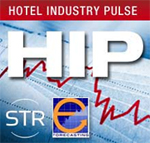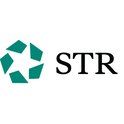United States: Hotel Industry Pulse strong in third quarter


The United States Hotel Industry Pulse Index increased 2.2% during August after edging up 2.5% during July, according to economic research firm e-forecasting.com in conjunction with STR.
HIP, the Hotel Industry Pulse Index, is a composite indicator that gauges real-time business activity in the U.S. hotel industry, similar to a GDP measure. The latest monthly change brought the index to a reading of 89.9. The index was set to equal 100 in 2000.
HIP's six-month growth rate, which historically has signaled turning points in U.S. hotel business activity, continued to improve. After 20 months of consecutive decreases, the rate has gone up seven consecutive months. August’s 18% increase improved upon July's growth of 15.2%. This compares with a long-term growth rate of 3.2%, which is the same as the 38-year average annual growth rate of the industry's gross domestic product.
“The August Hotel Industry Pulse Index shows that the U.S. hotel industry remained quite strong in the third quarter," said Maria Simos, CEO of e-forecasting.com.
Chad Church, director of special services at STR, added, “The growth in both demand and more recently, average daily rate, continues to propel the HIP.”
The probability of business expansion remained near the 100% mark in August, as has been the case since the beginning of the year. During August, the expansion probability was at 99.9%, negligibly down from July's reading of 100%.
The Hotel Industry Pulse Index, or HIP for short, is a hotel industry indicator that was created to fill the void of a real-time monthly indicator for the hotel industry. The indicator provides useful information about the timing and degree of the industry’s linking with the U.S. business cycle for the last 40 years. Simply put, it tracks monthly overall business conditions in the industry, like an industry GDP, and points in a timely way to the changes in direction from growth to recession or vice versa. The composite indicator is made with the following components: revenues from consumers staying at hotels and motels adjusted for inflation, room occupancy rate and hotel employment, along with other key economic factors which influence hotel business activity.
